Religion in Maharashtra
Religion in Maharashtra is characterized by the diversity of religious beliefs and practices. Maharashtra possesses six of the world's major religions; namely Hinduism, Islam, Buddhism, Jainism, Christianity, and Sikhism.
According to the 2011 census, Hinduism was the principal religion in the state at 79.83% of the total population, while Muslims constituted 11.54% of the total population. Maharashtra has the India's largest Buddhist and Jain populations. Buddhism accounted for 6% in Maharashtra's total population, with 6.53 million followers, which is 77% of all Buddhists in India. Sikhs, Christians and Jains constituted 0.2%, 1.0%, 1.2% of the population respectively.[2]
Hinduism

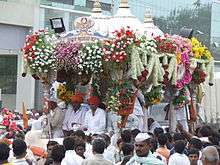
Hindus form 79.83% of the state's total population as per 2011 census and Hinduism plays an important role in the lives of the Maharashtrian people in their day-to-day life. Ganesh, Vitthal, other incarnations of Vishnu such as Ramchandra and Krishna, Maruti, Dattatreya, and Shiva Family deities such as Shankar and Parvati are deities popular with Hindus of Maharashtra. The varkari tradition holds a strong grip on the local Hindus of Maharashtra.[3]:140–170 The public Ganesh festival started by Lokmanya Tilak in the late 19th century is very popular. Marathi Hindus also revere Bhakti saints associated with varkari sects such as Dnyaneshwar, Savata Mali, Tukaram, Namdev, Janabaii and Chokhamela. Many religious figures from 19th and 20th century are revered.They include Swami Samarth, Gajanan Maharaj, Sai baba of Shirdi, Tukdoji Maharaj, and Gadge Maharaj.
Maharashtra has significant Hindu populations with origins in other states and regions of India, which adds to the diversity of temples and traditions in the state. The state has numerous recently built temples by groups such as the Swaminarayan sect, ISKON, and South Indian communities.
Ceremonies, rituals, and festivals of Marathi Hindus
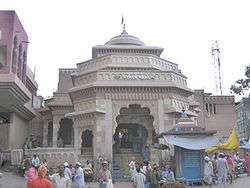
The main life ceremonies in Hindu culture include those related to birth, weddings, initiation ceremonies, as well as death rituals. Other ceremonies for different occasions in Hindu life include Vastushanti and "Satyanarayan" which is performed before a family formally establishes residence in a new house. Satyanarayana Puja is a ceremony performed before commencing any new endeavour or for no particular reason. Invoking the name of the family's gotra and the kula daivat are important aspects of these ceremonies for many communities.
Like most other Hindu communities, the Marathi people have a household shrine called a devaghar with idols, symbols, and pictures of various deities for daily worship. Ritual reading of religious texts known as pothi is also popular in some communities.
In some traditional families, food is first offered to the preferred deity in the household shrine, as naivedya, before being consumed by family members and guests. Meals or snacks are not taken before this religious offering. In present times, the naivedya is offered by families only on days of special religious significance.
Many Marathi people trace their paternal ancestors to one of the seven or eight sages, the saptarshi. They classify themselves as gotras, named after the ancestor rishi. Intra-marriage within gotras (Sagotra Vivaha) was uncommon until recently, being discouraged as it was likened to incest.
.jpg)
Most Marathi families have their own family patron or protective deity or the Kuladaivat.[3]:1–27 This deity is common to a lineage or a clan of several families who are connected to each other through a common ancestor.[4] The Khandoba of Jejuri is an example of a Kuladaivat of some families; he is a common Kuladaivat to several castes ranging from Brahmins to Dalits.[5] The practice of worshiping local or territorial deities as Kuladaivats began in the period of the Yadava dynasty.[4] Other family deities of the people of Maharashtra are Bhavani of Tuljapur, Mahalaxmi of Kolhapur, Mahalaxmi of Amravati, Renuka of Mahur, Parashuram in Konkan, Saptashringi on Saptashringa hill at Vani in Nasik district, and Balaji.
At birth, a child is initiated into the family ritually. The child's naming ceremony may happen many weeks or even months later, and it is called the barsa. During the naming ceremony, the child's paternal aunt has the honor of naming the infant. When the child is 11 months old, they get their first hair-cut.[6] This is also an important ritual and is called Jawal. In the Maratha community, the maternal uncle is given the honour of the first snip during the ceremony.[7]
In Brahman, CKP and Gaud Saraswat Brahman communities when a male child reaches his eighth birthday, he undergoes the initiation thread ceremony variously known as Munja Vratabandha, or Upanayanam.[8] 96 kuli marathas generally conduct the Upanayanam ceremony before marriage.
Marathi Hindu people are historically endogamous within their caste but exogamous with their clan.[6]Cross-cousin alliances are allowed by most Marathi Hindu communities.[7] Hindu marriages, take place by negotiation. The Mangalsutra is the symbol of marriage for the woman. Studies show that most Indians' traditional views on caste, religion, and family background have remained unchanged when it came to marriage,[9] that is, people marry within their own castes,[10] and matrimonial advertisements in newspapers are still classified by caste and sub-caste.[11]
Elements of a traditional Marathi Hindu wedding ceremony include seemant poojan on the wedding eve. The dharmic wedding includes the antarpat ceremony followed by the vedic ceremony which involves the bridegroom and the bride walking around the sacred fire seven times to complete the marriage. Modern urban wedding ceremonies conclude with an evening reception. A Marathi Hindu woman becomes part of her husband's family after marriage and adopts the gotra as well as the traditions of her husband's family. After weddings and after thread ceremonies, many Maratha and Deshastha Brahmin families arrange a traditional religious singing performance by a Gondali group [12]
Marathi Hindu people dispose their dead by cremation.[13] The ashes are gathered in an earthen pitcher and immersed in a river on the third day after death. This is a 13-day ritual with the pinda being offered to the dead soul on the 11th and a Śrāddha ceremony followed by a funeral feast on the 13th. Cremation is performed according to vedic rites, usually within a day of the individual's death. Śrāddha becomes an annual ritual in which all forefathers of the family who have passed on are remembered. Hindu Marathi people celebrate several festivals during the year.These include Gudi Padwa, Ram Navami, Hanuman Jayanti, Narali Pournima, Mangala Gaur, Navaratri, Janmashtami, Ganeshotsav, Kojagiri, Diwali, Khandoba Festival (Champa Shashthi), Makar Sankranti, Shivaratri, Holi, RakshaBandhan and Shiv Jayanti. Most villages in Maharashtra also have a Jatra or Urus in honor of the village deity.Most of these festivals are also celebrated by Hindu communities in the state who have origins in other regions of India.
Syncretic traditions
Maharashtra has shrines dedicated to saints and holy men all over the state that are revered by both Hindus and Muslims. The Naunaths of Hindus have counterparts among Muslims too.The shrine of Kanifnath is visited by both Hindus and Muslims.In modern times, Saibaba of Shirdi has been embodied this syncretic tradition.[14]
Islam
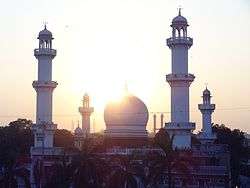
Islam is the second largest religion in the state, with 12,967,840 adherents comprising 11.54% of the population, per estimates.The Muslim population in the state is heterogeneous.The majority is Sunni with the rest being mainly followers of the Shia sect (Shi'ism). The population in the state is highly urbanised, and spread across different regions.The urban character of the community in Maharashtra can be seen from the fact that Mumbai, the capital city of Maharashtra, is approximately 18.8% Muslim per the Census.[15] Similarly, Nagpur, the second capital of Maharashtra, has population that is 11% Muslim. In Aurangabad City, Muslims form 30.79%[16] of the population, while in the northern city of Malegaon, Muslims are 79% of the population. Eid-ul-Fitr (Ramzan Eid) and Eid-ul-Azha (Bakari Eid) are the two most important Muslim festivals in the state.
Buddhism

Buddhism is the third largest religion in the state. Buddhism accounts 5.81% in Maharashtra's total population. 6,531,200 people are followers of Buddhism in Maharashtra as per 2011 census. Maharashtra account for 77.36% of all Buddhists in India.[17] Marathi Buddhists are followers of Navayana Buddhism of the Dalit Buddhist movement, a 20th-century Buddhist revival movement in India that received its most substantial impetus from Babasaheb Ambedkar born in Hindu Mahar family who called for the conversion of Dalits to Buddhism to escape a caste-based society that considered them to be the lowest in the hierarchy.[18]
Jainism
Jains are a major group in Maharashtra. Jain community census for 2011 in Maharashtra area was 1,400,349 (1.25%). They are mostly concentrated in the urban cities in Western Maharashtra.
The vast majority of Jains in Maharashtra originate from the Marwad and Mewad regions of Rajasthan and from the state of Gujarat.[19] There is a small indigenous Marathi Jain community in called Kumbhoja Maharashtra.[20] Rulers of Maharashtra from the 1st millennium CE such as Rashtrakuta and the Chalukya were followers of Jain religion. Along with Hindu and Buddhist caves, there are a number of Jain caves at the ancient cave complex of Ellora.
Christianity
.jpg)
Christians account for 1,080,073 or 0.96% of Maharashtra's population. Most of the Christians are Catholics and Protestants. There are also Goan, Mangalorean, Keralite and Tamilian Christians in the urban pockets of Mumbai and Pune. There are two ethnic Christian communities in Maharashtra:
- East Indians – Majority Catholics, concentrated in Mumbai and in the neighbouring districts of Thane and Raigad. St Bartholomew preached to the natives of this region in the 1st century AD.
- Marathi Christians – Majority Protestants found specially in Ahmednagar and Solapur. Protestantism was brought to these areas by American and Anglican missionaries during the 18th century. Marathi Christians have largely retained their pre-Christian cultural practices.
- In the early 19th century some people converted to Christianity during famine in Ahmednagar and Miraj.[21] They converted after evangelization by American Marathi Mission, Church Mission Society and United Society for the Propagation of the Gospel by the Church of England at Ahmednagar.[22] In Ahmednagar, Missionary travelled between villages to explain the Bible to locals.[23] who brought these people to Christianity. However, this Christian conversion movement was overshadowed by the large-scale conversion to Buddhism of the Dalits under the leadership of B. R. Ambedkar.[24]
Sikhism
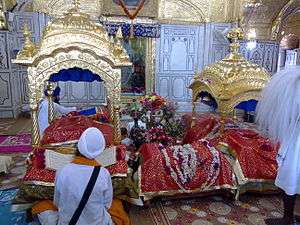
There is a sizeable Sikh population in Maharashtra, with the 2011 census indicating 223,247 or 0.20% adherents.[25] Major cities in the state such as Mumbai, Pune, Nagpur, Nashik and Aurangabad have significant Sikh populations. Nanded, the second largest city in the Marathwada region (after Aurangabad), is an important holy place for the Sikh faith and is famous for the Hazur Sahib Gurudwara. Hazūr Sāhib ("presence of the master"), also spelled Hazoor Sahib, is one of the five takhts (seats of temporal authority) in Sikhism. Located on the banks of the River Godavari, it is where the 10th Guru, Gobind Singh died. The Gurudwara within the complex is known Sach-Khand, "Realm of Truth". At a stone-throw distance from the Hazoor Sahib Gurudwara, there lies the Langar Sahib Gurudwara which is very famous for its grand Langar. In all the city has 13 major Gurudwaras with historic significance. There is a significant Sikh population in Mumbai, Pune, Nagpur, Nashik and Aurangabad.
Zoroastrians
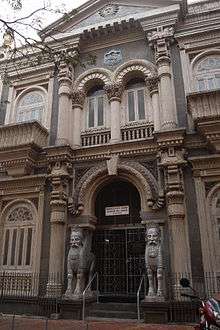
There are two Zoroastrian communities in Maharashtra.
- Parsis - The 2011 census found that the vast majority of the tiny Parsi community of India live in Maharashtra, mainly in Mumbai.[26][27] have descended from a group of Iranian Zoroastrians who immigrated to Western India during 10th century AD, due to persecution by Muslims in Iran.
- Iranis, are comparatively recent arrivals, and represent the smaller of the two Indian-Zoroastrian communities. Their descendants culturally and linguistically are closer to the Zoroastrians of Iran, in particular to the Zoroastrians of Yazd and Kerman. Consequently, the Dari dialect of the Zoroastrians of those provinces may also be heard amongst the Iranis.
Judaism
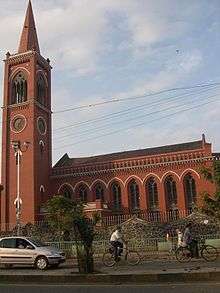
The Bene Israel ("Sons of Israel") are a community of Marathi Jews originally from villages in the Konkan region. who migrated in the late 17th century to the nearby cities, primarily Mumbai, but also to Pune, and Ahmedabad.[28] Prior to these waves of emigrations and to this day, the Bene Israel formed the largest sector of the subcontinent's Jewish population. The native language of the Bene Israel is Marathi. Most Bene Israel have now emigrated to Israel, Canada and other Commonwealth countries. Before the Indian Independence this community numbered at least 80,000.
See also
Notes
References
- "Population by religious community - 2011". 2011 Census of India. Office of the Registrar General & Census Commissioner. Archived from the original on 25 August 2015. Retrieved 25 August 2015.
- "Population by religion community – 2011". Census of India, 2011. The Registrar General & Census Commissioner, India. Archived from the original on 25 August 2015.
- Maxine Berntsen (editor) (1988). The Experience of Hinduism: Essays on Religion in Maharashtra. SUNY Press. ISBN 978-0-88706-662-7.CS1 maint: extra text: authors list (link)
- Walunjkar, pp. 285–287.
- Government of Maharashtra 1962.
- Ghosal 2004, pp. 478–480.
- Carter, A. T. (1973). "A Comparative Analysis of Systems of Kinship and Marriage in South Asia". Proceedings of the Royal Anthropological Institute of Great Britain and Ireland No. 1973 (1973), pp. 29-54 (1973): 33. JSTOR 3031719.
- Mookerji 1989, pp. 174–175.
- Bahuguna 2004.
- Srinivasa-Raghavan 2009.
- The Economist 2010.
- Zelliot & Berntsen 1988, pp. 176.
- Ghosal 2004, p. 479.
- J. J. Roy Burman (2002). Hindu-Muslim Syncretic Shrines and Communities. Mittal Publications. pp. 1–15. ISBN 978-81-7099-839-6.
- "Census GIS Household". Census of India. Office of the Registrar General. Archived from the original on 6 July 2010. Retrieved 9 December 2008.
- "Aurangabad District Religion Data - Census 2011". www.census2011.co.in. Retrieved 26 July 2017.
- "Dalits Are Still Converting to Buddhism, but at a Dwindling Rate".
- Thomas Pantham; Vrajendra Raj Mehta; Vrajendra Raj Mehta (2006). Political Ideas in Modern India: thematic explorations. Sage Publications. ISBN 0-7619-3420-0.
- Gadgil, D.R., 1952. Poona: Socio-economic survey. Part II.
- B. V. Bhanu (2004). Maharashtra. Popular Prakashan. pp. 910–. ISBN 978-81-7991-101-3.
- Rege, Sharmila (2006). Writing caste, writing gender : reading Dalit women's testimonios. New Delhi: Zubaan. p. 139. ISBN 8189013017.
- "Gazetteers Of The Bombay Presidency – Ahmadnagar". Maharashtra.gov.in. Retrieved 2011-11-13.
- Shelke, Christopher (2008). God the Creator : universality of inculturality. Roma: Pontificia università gregoriana. p. 167. ISBN 887839128X.
- Stackhouse, editors, Lalsangkima Pachuau, Max L. (2007). News of boundless riches : interrogating, comparing, and reconstructing mission in a global era. Delhi: ISPCK. pp. 230–232. ISBN 8184580134.CS1 maint: extra text: authors list (link)
- "Population by Religious communities". Ministry of Home Affairs, Government of India.
- "Where we belong: The fight of Parsi women in interfaith marriages".
- "Parsi population dips by 22 per cent between 2001-2011: study".
- Fischel, Walter (1970). "Bombay in Jewish History in the Light of New Documents from the Indian Archives". Proceedings of the American Academy for Jewish Research. 38/39: 119–144. JSTOR 3622356.
External links
| Wikimedia Commons has media related to Religion in Maharashtra. |
.jpg)